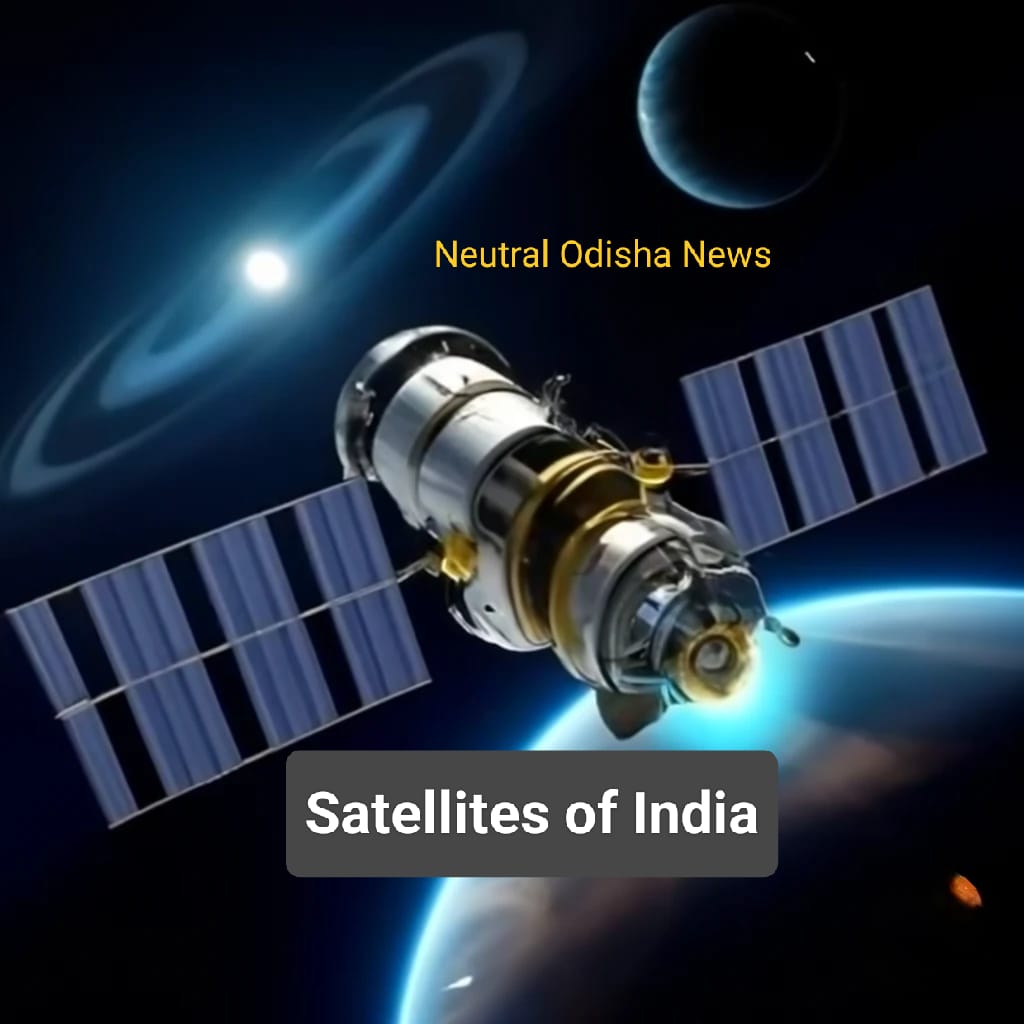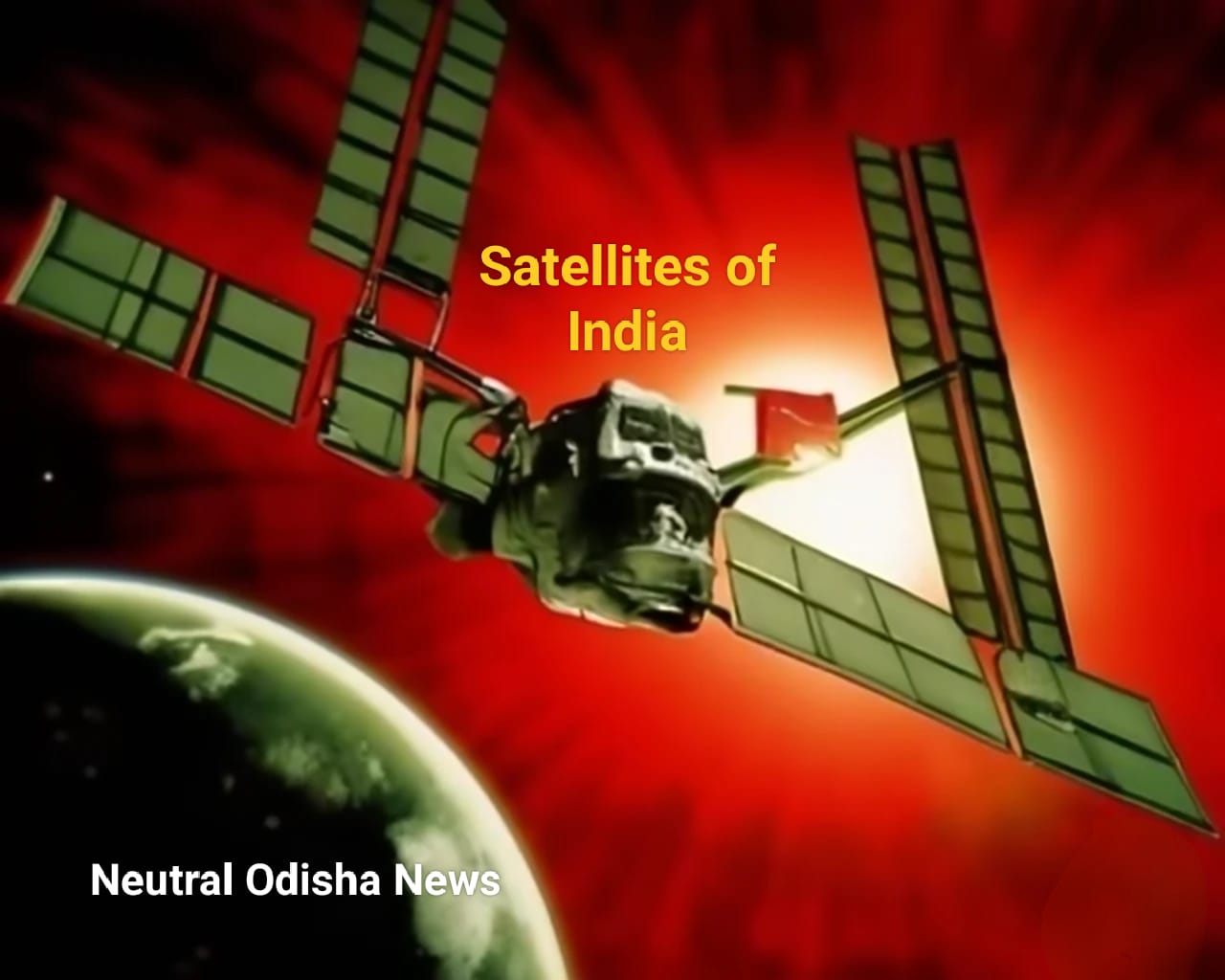India’s satellite program, driven by the Indian Space Research Organisation (ISRO), is a remarkable success story in the field of space exploration and technology. From humble beginnings in the 1960s, ISRO has evolved into a global space player, launching a wide range of satellites for communication, remote sensing, navigation, and scientific research. In recent years, India’s private sector has also entered the satellite domain, further accelerating innovation.
This article covers the history, evolution, current state, Indian private sector involvement, a detailed list of India’s satellites, and satellite launch vehicles.
1. Initial Days of India’s Satellite Program
India’s satellite journey began with a vision to use space technology for societal development. The Indian National Committee for Space Research (INCOSPAR), established in 1962 under the leadership of Dr. Vikram Sarabhai, marked the country’s early space exploration phase.
- First Satellite: India launched its first satellite, Aryabhata, on April 19, 1975, from the Soviet Union using a Kosmos-3M rocket. Named after the ancient Indian mathematician Aryabhata, it was an experimental satellite for scientific research.
- Early Objectives: In the initial days, India’s space program aimed to develop indigenous technology to support communication, meteorology, and remote sensing, with a focus on societal applications like weather forecasting, education, and disaster management.
2. Evolution of India’s Satellite Program
After the launch of Aryabhata, India steadily developed its satellite capabilities, focusing on creating a self-sustained and diversified satellite infrastructure.
The 1980s: INSAT Series and Remote Sensing
- The INSAT (Indian National Satellite System) series was launched in 1983, marking India’s entry into geostationary communication satellites. These satellites provided telecommunications, broadcasting, and meteorological services.
- The launch of Rohini-1 in 1980 using India’s first indigenous rocket, the SLV-3 (Satellite Launch Vehicle), demonstrated India’s ability to build and launch its own satellites.
- IRS (Indian Remote Sensing) satellites were launched starting in 1988, making India one of the few countries with remote sensing capabilities. These satellites provided crucial data for agriculture, forestry, land-use mapping, and disaster management.
The 1990s: Expansion and Technological Advancements
- The PSLV (Polar Satellite Launch Vehicle), operational since 1993, became the workhorse of India’s space program. It successfully launched satellites into sun-synchronous orbits, facilitating remote sensing and Earth observation missions.
- By the late 1990s, India had launched INSAT-2 series satellites, enhancing telecommunication, broadcasting, and meteorological capabilities.
2000s: Global Recognition and Mars Mission
- The 2000s saw the expansion of the GSAT (Geostationary Satellite) series for communications and GSAT-1 was launched in 2001.
- In 2008, India launched Chandrayaan-1, its first lunar mission, marking the country’s entry into planetary exploration. Chandrayaan-1 made a significant discovery of water on the moon’s surface.
- The Cartosat series launched during this period enhanced high-resolution imaging, used for cartography and urban planning.
2010s: Gaganyaan, Navigation, and Space Diplomacy
- India successfully launched Mangalyaan (Mars Orbiter Mission) in 2013, becoming the first country to reach Mars on its maiden attempt.
- The NavIC (Navigation with Indian Constellation) system was developed, providing accurate position information over India and the surrounding region. It is an indigenous alternative to GPS.
- The GSAT and INSAT series expanded to provide advanced communication and direct-to-home (DTH) television services.
- India also emerged as a major player in the global space market by launching foreign satellites through its PSLV, earning recognition for low-cost, reliable satellite launches.
3. Current State of India’s Satellite Program
Today, India has a robust satellite program with over 350 satellites launched (including foreign satellites). ISRO is recognized as one of the leading space agencies globally.
Key Operational Satellites
- Communication Satellites: The GSAT and INSAT series provide television, internet, and telecommunication services across the country. They also support weather forecasting, military communication, and broadcasting services.
- Earth Observation: The Cartosat, Resourcesat, and RISAT (Radar Imaging Satellite) series are used for high-resolution imaging, resource monitoring, disaster management, and military applications.
- Navigation Satellites: The NavIC constellation provides regional GPS services, with accuracy comparable to the US GPS system.
- Scientific Missions: India continues to pursue scientific exploration with missions like Chandrayaan-2 (2019) and the upcoming Gaganyaan (Human Spaceflight Mission).
4. Entry of Indian Private Sector into Satellites
The Indian private sector has recently made significant strides in the satellite domain, driven by ISRO’s encouragement and policy reforms.
Privatization and Startups
- In 2020, the Indian government opened up the space sector to private companies, allowing them to build satellites, rockets, and launch services.
- NewSpace India Limited (NSIL) and Indian National Space Promotion and Authorization Center (IN-SPACe) were established to promote private participation.
- Startups like Pixxel, Skyroot Aerospace, Agnikul Cosmos, and Bellatrix Aerospace are developing satellites and satellite launch vehicles.
Key Developments
- Pixxel is building a constellation of Earth-imaging satellites to monitor the planet for environmental changes.
- Skyroot Aerospace and Agnikul Cosmos are working on developing private satellite launch vehicles.
- Bharti Group, along with the UK government, invested in OneWeb, a global satellite broadband venture, further integrating India into the global satellite communications industry.

5. List of Indian Satellites (Detailed)
1. Aryabhata (1975)
- Purpose: Scientific research, specifically in space physics and solar physics.
- Status: First Indian satellite, now non-operational.
2. INSAT Series (1983-Present)
- Purpose: Communication, broadcasting, and meteorology.
- Operational Satellites: INSAT-4B, INSAT-3DR, and others.
- Contribution: Essential for television, telecommunication, and meteorological data.
3. IRS Series (1988-Present)
- Purpose: Earth observation and remote sensing.
- Operational Satellites: IRS-1A, IRS-P4 (Oceansat), and Resourcesat.
- Contribution: Vital for agriculture, forestry, land use, and disaster management.
4. GSAT Series (2001-Present)
- Purpose: Geostationary communication satellites.
- Operational Satellites: GSAT-10, GSAT-12, GSAT-29, GSAT-30.
- Contribution: Telecommunications, DTH television, broadband services.
5. NavIC (2013-Present)
- Purpose: Regional satellite navigation system.
- Operational Satellites: IRNSS-1A to IRNSS-1G.
- Contribution: Navigation, especially for Indian military, marine, and civil services.
6. Cartosat Series (2005-Present)
- Purpose: High-resolution Earth imaging for cartography, urban planning, and defense.
- Operational Satellites: Cartosat-2, Cartosat-3.
- Contribution: Mapping, land use monitoring, military reconnaissance.
7. RISAT Series (2009-Present)
- Purpose: Radar imaging for all-weather surveillance.
- Operational Satellites: RISAT-1, RISAT-2BR1.
- Contribution: Military applications, disaster management, and environmental monitoring.
8. Chandrayaan Series
- Chandrayaan-1 (2008): First mission to the Moon, discovered water on the lunar surface.
- Chandrayaan-2 (2019): Second lunar mission aimed at studying the Moon’s south pole, partially successful.
9. Mangalyaan (2013)
- Purpose: Mars exploration.
- Contribution: First interplanetary mission by India, collected data on Mars’ atmosphere and surface.
10. Oceansat Series (1999-Present)
- Purpose: Oceanography and environmental monitoring.
- Operational Satellites: Oceansat-2, Oceansat-3.
6. List of Satellite Launch Vehicles (Detailed)
India has developed a series of satellite launch vehicles (SLVs) over the years, enabling the successful deployment of its satellites into various orbits. Below is a detailed list of India’s significant satellite launch vehicles:
1. SLV (Satellite Launch Vehicle)
- First Flight: 1980
- Payload Capacity: Up to 40 kg to low Earth orbit (LEO)
- Notable Launches: The SLV-3 successfully launched Rohini Satellite RS-1 on July 18, 1980, marking India’s first indigenous satellite launch.
- Significance: SLV marked the beginning of India’s satellite launch capabilities, laying the foundation for future developments in rocketry.
2. ASLV (Augmented Satellite Launch Vehicle)
- First Flight: 1987
- Payload Capacity: Up to 150 kg to low Earth orbit (LEO)
- Notable Launches: The ASLV-2 successfully launched SROSS-C (Stretched Rohini Satellite Series-C) in 1994.
- Significance: The ASLV program aimed to augment the payload capacity and improve reliability over its predecessor, SLV.
3. PSLV (Polar Satellite Launch Vehicle)
- First Flight: 1993
- Payload Capacity: Up to 1,800 kg to sun-synchronous orbit (SSO) and up to 3,200 kg to LEO.
- Notable Launches:
- Launched Chandrayaan-1 in 2008, India’s first mission to the Moon.
- Successfully launched Mars Orbiter Mission (Mangalyaan) in 2013, making India the first country to reach Mars on its maiden attempt.
- Significance: The PSLV is considered the workhorse of ISRO, renowned for its versatility and reliability. It has successfully launched numerous foreign satellites, contributing to India’s reputation as a cost-effective launch provider.
4. GSLV (Geosynchronous Satellite Launch Vehicle)
- First Flight: 2001
- Payload Capacity: Up to 2,500 kg to geosynchronous transfer orbit (GTO).
- Notable Launches:
- Launched GSAT-5A in 2014.
- Successfully launched GSAT-6A in 2015, which provided telecommunication services.
- Significance: The GSLV was developed to launch heavier communication satellites into GTO, enhancing India’s capabilities in the geostationary orbit. It features an indigenously developed cryogenic upper stage for improved performance.
5. GSLV Mk III (LVM-3)
- First Flight: 2014
- Payload Capacity: Up to 4,000 kg to geosynchronous transfer orbit (GTO).
- Notable Launches:
- Launched GSAT-19 in 2017, a high-throughput communication satellite.
- Conducted a test flight for the upcoming Gaganyaan (crewed space mission).
- Significance: GSLV Mk III is designed for launching heavier payloads and is expected to play a vital role in India’s crewed space missions and future deep space explorations.
6. SSLV (Small Satellite Launch Vehicle)
- First Flight: 2022
- Payload Capacity: Up to 500 kg to sun-synchronous orbit (SSO).
- Notable Launches: Launched the EOS-02 satellite in 2022.
- Significance: The SSLV is designed for rapid turn-around time and flexibility for small satellite launches, catering to commercial and international market needs.
India’s satellite launch vehicles have played a crucial role in establishing the country as a prominent player in the global space arena. With a range of capabilities, these launch vehicles have not only supported India’s domestic satellite programs but have also enabled numerous international collaborations. The evolution of these launch vehicles, from SLV to GSLV Mk III and SSLV, reflects ISRO’s commitment to enhancing its technological capabilities and meeting the diverse needs of the satellite industry. As India continues to advance its space exploration agenda and integrate the private sector into its satellite ecosystem, the future of India’s satellite program appears promising, paving the way for new innovations and opportunities.




